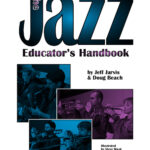
Charter Schools and the National Education Problem
In the late 1980s, Ray Budde, an expert in school district organization, introduced the concept of charter schools. He based his work on the example of Henry Hudson’s charter from the East India Company for finding a new passage to the Orient. In addition, Albert Shanker, president of the American Federation of Teachers, proposed a model where groups of teachers could start their own schools.
Lack of demand for charter schools
Many school reformers talk about charter schools, but they don’t address the real problems facing public education. Recent data shows that charters are not the answer to the nation’s education problem. Rather, they are a small slice of the education pie. In fact, lack of demand for charter schools is one of the biggest challenges.
There are many reasons for this. First, charter schools claim that they are better than public schools. And in states with judicious authorizers, charter schools outperform public schools. In Massachusetts, charter schools are required to show that they’ve “met their contract” by meeting certain performance requirements, such as academic success and equity among students. Further, they’re required to submit annual financial audits and site visits to show that they’re meeting their financial obligations.
Charter schools have drawn support from unusual political groups. Many conservatives and progressives like the idea of allowing market competition, while union leaders saw charter schools as a way to give teachers more voice. Four presidents have publicly stated their support for charter schools. While most federal funds allocated to education go to state governments, the charter schools program remains a major source of funding for charter schools.
The study also found that charter schools served significantly fewer students with special needs than traditional public schools. In fact, only two out of thirty-eight high-performing charter schools had a special education student population of 15 percent or more. In addition, charter schools enroll far fewer students with severe disabilities.
Charter school governance structures
A charter school is a school that operates independently of the local school district. Its governing board, known as a governing body, is responsible for ensuring that curricula are aligned with state standards and that the school’s performance meets its expectations. These boards may be elected or appointed by the school, and they should be accountable to the community. Charter schools also have a school board, but the board is appointed by the charter school itself, not by the local school district.
In addition to having full authority over major decisions, a charter school board should also have access to all financial, operational, and personnel information. The charter school board should also be provided with training on how to negotiate effective contracts, and should be informed about any conflicts of interest among members. By following these steps, charter schools can ensure their boards are effective and can function independently.
Charter school enrollment has grown in recent years. As of 2016, 6% of public school students attended a charter school. This number has been growing steadily for the past decade, but appears to be leveling off. Additionally, a disproportionate share of charter students are Hispanic and Black. In fact, more than 10% of Black students attend a charter school and more than seven percent of Hispanic students attend one.
Despite the growing popularity of charter schools, the movement has faced criticism and polarization from various groups. Some conservatives support market competition while others favor limited government control. Some union leaders saw early promise in the charter school movement and saw it as an opportunity to give teachers more power and influence. Four presidents have endorsed charter schools.
Less experienced teachers
There’s no doubt that high-quality teachers are essential to academic achievement. However, there are conflicting opinions about how to cultivate and retain them. The teachers unions and the advocates of charter schools often clash over this issue. New York State’s Department of Education tracks teacher turnover and has found that some charter schools lose more teachers than traditional schools.
While there are many arguments against charter schools, many believe that they improve educational achievement, especially for low-income students in urban areas. Despite their laudable aims, charter schools tend to be more segregated economically and racially than traditional public schools.
Many charter schools rely on younger, inexperienced teachers. Yet many of these schools lack the resources to hire and retain experienced teachers. Researchers at Stanford University analyzed a national survey of charter school educators to find out how to attract and retain qualified educators in their schools. It was found that while charter schools tend to attract low-income students, their teachers lack experience and resources.
The rapid growth of charter networks is associated with efforts to privatize public education. While those who believe in market reforms and business models have made progress, they must not forget that this approach will produce unequal access to education for many.
Less unionized teachers
The recent rise of charter schools has created an opportunity for teachers unions to make inroads into the charter sector. For example, the Denver Classroom Teachers Association has called for charter school teachers to reveal their salaries and union affiliations. Meanwhile, five Chicago charter schools have considered strikes. The California Teachers Union is also working to organize the largest charter network in Los Angeles.
The unions need teachers to be their dues-paying members in order to be effective and continue fighting for the rights and benefits teachers today demand. The unions also need to address the needs of the next generation of teachers, who would like to take more professional roles in schools and have a seat at the school strategy table.
In addition to the public education problem, charter school teachers are unhappy with their working conditions. Their workload is longer, there is more turnover, and their pay is lower than at traditional public schools. That is why charter school teachers are organizing. And they are making headway. The unionization effort started at seven charter schools in Florida two years ago and has spread to at least 12 other charters in the past year.
While the unions are still fighting this battle, they do not want to end the charter schools. In the end, the unions need to find ways to engage younger teachers and work with them in the charter schools.
Lower student outcomes in traditional public schools
There is much research on the effects of charter schools on traditional public schools, but the results are largely mixed. Although many studies find no difference between students in traditional and charter schools, others have found some benefits. One study, by Holmes and colleagues in North Carolina, found that students in traditional public schools did slightly better on state tests after a charter school opened nearby. The researchers say that these findings may be due to the increased competition between the traditional and charter schools in the area.
The CREDO study found that students in public charter schools outperform their traditional public school counterparts on tests of reading and math. Moreover, students from low-income families showed greater academic achievement. They also outperformed their traditional public school peers in many other areas, including social indicators. Students in charter schools have higher attendance rates, higher persistence rates, and lower rates of teen pregnancy and incarceration than students from traditionally-funded public schools.
The findings are mixed, with some studies reporting higher gains than others. But other studies show that charter schools do have a positive impact on students’ outcomes, including higher academic engagement, college graduation, and career readiness. Large-scale studies, including those from the RAND Corporation, the Center for Research on Education Outcomes at Stanford University, and Mathematica Policy Research have analyzed the effects of charter schools on traditional public schools.
Uneven access to charter schools
One of the main issues in America is uneven access to charter schools. Many of these schools have strict admissions policies, and they often fail to serve children who are disadvantaged or have special needs. In addition, charter schools often have harsh discipline policies. Some states have enacted legislation to make these schools more accountable.
Charter schools have a lot of supporters, but they have their detractors. They tend to serve underserved populations, often people of color or in poverty. Racial segregation is another problem, which is often exacerbated by charter schools. In addition, some charters are over-representatively low-income, which skews the ratio of low-income students to high-income students.
The public schools in poor areas are intentionally underfunded, and resources are diverted to private charter schools. But public schools also have to meet certain performance criteria, and many of them are not able to do so due to lack of resources. This failure is used to justify cutting public school budgets and redirecting public funds to charter schools.
In March, the president urged Congress to fund choice in public education. The charter movement began to gain traction, and now the Trump administration is the face of choice. But charter supporters fear that he’ll get associated with the new administration and the new charter framework. As a result, many high-quality charter school leaders have chosen to keep a low profile and not associate themselves with Trump’s agenda.









